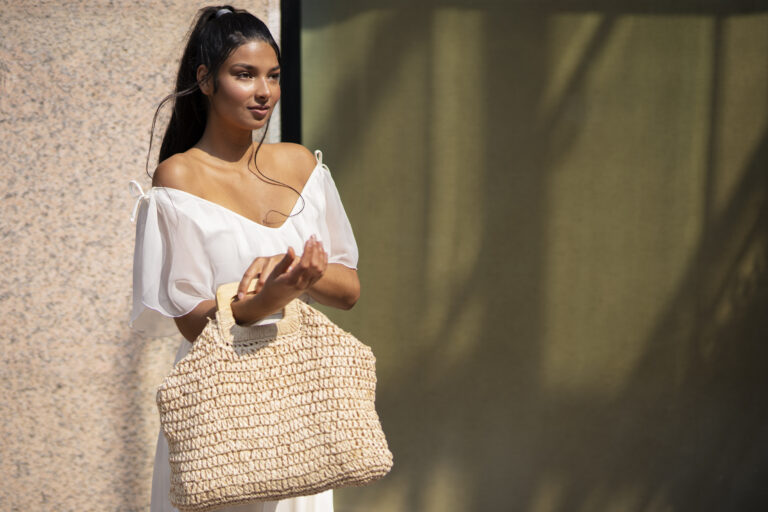10 Most Important Sewing Skills To Practice Today To Earn More Income
Sewing is enjoyable and rewarding to learn! As with other things, your sewing skills will improve as you sew more. You’ll use some tactics regularly and be sure that you have mastered them.
On the other hand, stitching is a skill that you can never fully master. It’s crucial to keep picking up new knowledge, abilities, and methods.
This article is designed to explain 10 most important sewing skills you can practice today to earn more income for yourself. So let’s get started.
1. Correctly Thread Your Machine
A sewing machine with all the threads in place!
Sewing machines were frequently present when I was growing up, so I had no trouble threading them.
Without guidance, beginning sewers who have never seen a machine strung up may find it a little scary.
Before you begin sewing, it’s a good idea to practice threading your machine a few times so that you feel more at ease around it.
Create, pattern, and make your own exquisite attire!
Receive email notifications when The Creative Curator posts new sewing, pattern-making, and fashion design instructions (and goods).
2. Straight Line Sewing
To assist you in sewing straight lines, you can also utilize the outside edge of your sewing machine foot as a sewing guide.
Sewing straight lines is the first skill to master. It seems simple, yes?
Sewing a straight line becomes much more difficult when you have to coordinate two pieces of cloth with two hands and control the pace of the sewing machine with your foot.
3. Sewing A Seam That Is Open
The simplest seam to sew is an open seam. The open seam, also known as a plain seam, is just a straight or curved stitched line that is then pressed open so the seam allowance is on both sides of the stitch line.
4. Sewing A Welt Seam
A welt seam is the next most utilized seam. This seam is strengthened by an additional line of stitching, making it ideal for coats and heavier fabrics like denim.
Your denim jeans’ outside leg has a seam that is typically missed together, which is then produced and sewn into place if you pay close attention. The welt seam appears here.
5. Transparent Zipper
Now. This always perplexes new sewers, but do not worry! To help you practice sewing flawless concealed zippers, I made a beautiful step-by-step invisible zipper tutorial.
I advise making repeated use of the same invisible zipper by sewing it in, removing it, and sewing it back in.
One of the best things you can do for your sewing abilities is to devote one or two hours to sewing an invisible zipper.
6. Hem With A Double Fold
The double fold hem is the ideal hem to begin with when making clothing.
This hem is an enclosed hem, therefore it encloses the fabric’s raw edge to conceal it.
7. Making A Buttonhole
If you’re anything like me, you might wind up having someone else buttonhole your hand-sewn clothing. I done this for a long time.
Finally, I took the time to learn how my Bernina created buttonholes and practiced for a few hours. I can buttonhole like a pro now!
Most sewing machines can now be used to sew buttonholes, but you might start by hand-sewing them.
8. Making And Putting Together Bias Binding
One of the nicest things you can do is learn how to make your own bias binding since it gives you more freedom to add unexpected flashes of color or design to the clothing you sew yourself.
As a straightforward bias finish that is top stitched and wraps around the fabric edge.
as a neat edge finish for your fabric that conceals topstitching.
Finishing necklines, armholes, and even hems with a facing.
9. French Seams
One of my favorite seams, but perhaps the trickiest for a beginner to master, is this one.
The French seam is formed of two lines of stitching that function to encapsulate the raw fabric edge and is used on sheer or fine textiles.
Additionally, it is extremely narrowly sewed, which is what makes it challenging, but practicing this sewing technique will result in nicely finished seams.
10. Embroidering A Mitred
Now. The most difficult game on the list—and one that may not be suitable for complete beginners—is this one. Build up to this one by honing your other sewing techniques first.
The hem and facing on jacket openings or the vents at the back of a skirt are frequently finished with a mitered corner.
If done correctly, it provides your hand-sewn item with a lovely, polished finish.
Here are 10 stitching techniques for you to practice. With which will you begin?
Conclusion
This post is written with you in mind. Its goal is to assist you in organizing sewing projects that will continuously challenge your sewing skills.
Make sure you use these 10 sewing techniques and put them to practice right away to help you sew creatively if you’re learning to sew your own garments and feeling a little overwhelmed by everything there is to learn.

